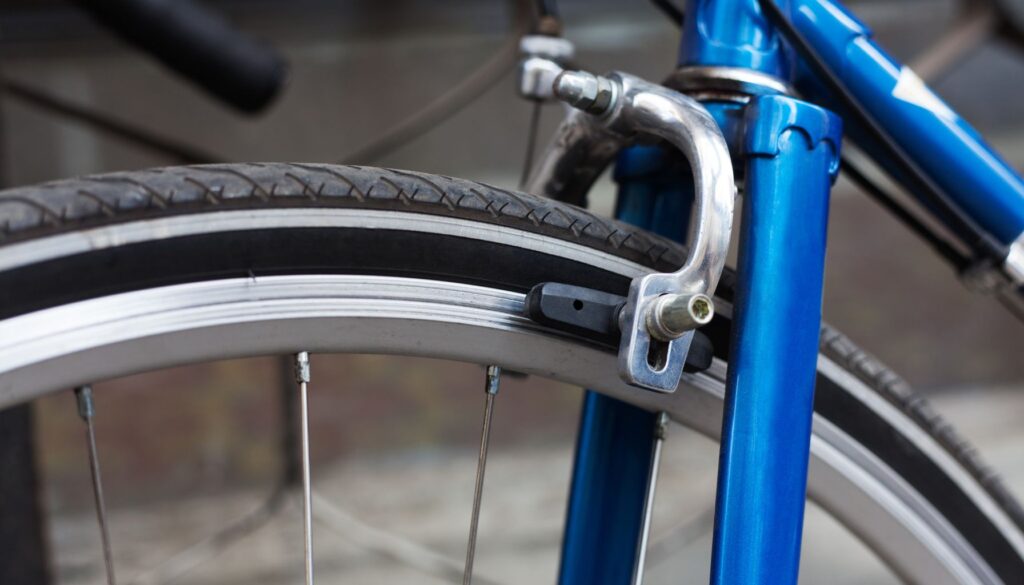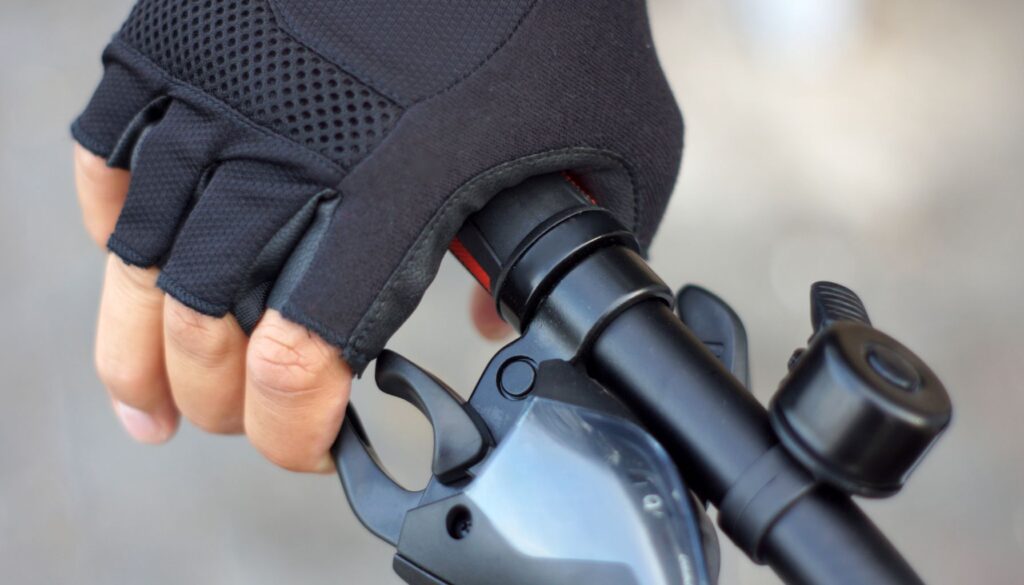Are you tired of the high-pitched squeal every time you hit your bike brakes? Not only is it annoying, but it can also be a sign that your bike isn’t in top shape. Whether you’re a casual rider or a seasoned cyclist, learning how to stop your bike brakes from squeaking is essential for a smoother and safer ride. Dive into our guide to discover simple yet effective techniques to silence those noisy brakes and enhance your cycling experience.
Correct Brake Pad Alignment
Ensuring your bike’s brake pads are correctly aligned is crucial for eliminating that annoying squeak every cyclist dreads. Misalignment can cause uneven wear on the brake pads and the rim, leading to inefficient braking and that unwelcome noise. First and foremost, check that the pads are parallel to the rim. This means they should make contact with the rim at the same time across their entire surface. If they’re not, you’ll need to loosen the brake pad fixing bolt slightly and adjust accordingly.
Another aspect to consider is the toe-in adjustment. This is a slight angling of the brake pads, where the front part of the pad touches the rim before the rear. This setup helps in reducing squeaking by ensuring a smoother engagement between the pad and the rim. Achieving the perfect toe-in can be a bit tricky and might require a few attempts. Use a thin object, like a business card, to set the correct angle by placing it between the rear of the pad and the rim while tightening the pad. This ensures a slight but effective toe-in alignment.
Lastly, always ensure your brake pads are clean and free from debris or oil, as these can also lead to squeaking. Regularly inspect the pads for wear and replace them when necessary. Brake pads that are worn down too much can’t be aligned properly, which might be the source of the noise. Remember, safety is paramount, and well-maintained brakes are essential for a safe ride. Follow these steps, and you should enjoy a quieter, more pleasant cycling experience.
- Check that the brake pads are parallel to the rim.
- Loosen the brake pad fixing bolt for adjustment.
- Apply a toe-in adjustment for smoother engagement.
- Use a thin object like a business card to set the toe-in angle.
- Keep brake pads clean and replace them when necessary.
Effective Strategies to Silence Squeaky Bike Brakes
Squeaky bike brakes can be more than just an annoyance; they can signal that your bike is in need of some attention. Fortunately, with a few simple steps, you can address this common issue and enjoy a quieter ride. The key to solving the squeaking issue often lies in understanding its causes, which can range from dirty brake pads to misaligned parts.
First and foremost, cleaning your brake pads and rims can make a significant difference. Over time, dirt, grime, and other debris can accumulate, causing noise and reducing braking efficiency. Use a clean cloth and some isopropyl alcohol to gently clean these areas. If the noise persists, checking the alignment of your brake pads is crucial. Misaligned brake pads can lead to uneven wear and, consequently, squeaking. Ensure that your brake pads are not only clean but also properly aligned with the rim.
Another area to consider is the condition of your brake pads. Worn-out pads can be a source of noise and are less effective at stopping your bike. Inspecting them regularly and replacing them when necessary can prevent squeaking and improve safety. Remember, while these fixes can be done at home, seeking professional help is advisable if the problem persists or you are unsure of the correct procedures.
Quick Reference: Maintenance Checklist for Squeak-Free Brakes
Understanding Brake Maintenance Essentials
| Maintenance Task | Frequency | Importance |
|---|---|---|
| Clean brake pads and rims | Monthly | High |
| Check pad alignment | Every 3 months | Medium |
| Inspect pad wear | Every 6 months | High |
| Lubricate brake components | Annually | Low |
| Professional brake service | As needed | Variable |
Cleaning Your Brake Pads

One of the most effective ways to stop your bike brakes from squeaking is by cleaning your brake pads. Over time, brake pads can accumulate dirt, grime, and small particles that can cause noise and reduced efficiency. Start by removing the wheel and then the brake pads from the caliper. Using a clean cloth and some isopropyl alcohol, gently wipe the surface of the brake pads to remove any debris. For stubborn grime, you may use a soft brush, but be careful not to damage the pad surface.
Inspect the brake pads for any signs of wear or damage. If the pads are worn unevenly, it might be necessary to sand them lightly with fine-grit sandpaper to achieve a flat surface. This will ensure a proper contact with the rim or disc, reducing the chances of squeaking.
Once the brake pads are clean and dry, re-install them along with the wheel. Make sure everything is properly aligned and tightened. Before going for a ride, test the brakes several times to ensure they are functioning correctly. Regular maintenance of your brake pads not only helps in preventing squeaks but also extends the lifespan of your braking system.
| Step | Tool/Supply Needed | Description |
|---|---|---|
| 1 | Clean Cloth | For wiping off dust and grime from the brake pads. |
| 2 | Isopropyl Alcohol | Used to clean the brake pads effectively. |
| 3 | Soft Brush (optional) | Helps remove stubborn dirt without damaging the pads. |
| 4 | Fine-grit Sandpaper | For smoothing uneven surfaces on the brake pads. |
| 5 | Adjustment Tools | To ensure proper alignment and tension of the brake system. |
Lubricating the Brake System
Lubricating the brake system is a crucial step in maintaining the optimal performance of your bike and reducing the annoying squeaking sound often associated with brake pads. This process involves the careful application of lubricant to the brake components, excluding the brake pads and rotors, to ensure smooth operation and prevent corrosion. It’s vital to select the right type of lubricant that is designed specifically for bicycle brake systems to avoid damage and ensure longevity.
Before applying lubricant, it’s essential to clean the brake system thoroughly. Dirt and grime can accumulate over time, causing the brakes to squeak even if they are well-lubricated. Use a dedicated brake cleaner or a mild soap solution to clean the brake calipers, levers, and cables. After cleaning, apply a light layer of lubricant to the pivot points on the brake calipers, the brake lever pivots, and the cable ends. Be cautious not to over-lubricate, as excess lubricant can attract dirt and degrade the brake’s performance.
Regular maintenance, including lubrication, can significantly extend the life of your bike’s brake system and enhance your riding experience. A well-lubricated brake system offers smoother braking, reduces wear on components, and most importantly, eliminates that irritating squeak. Remember, the goal is to maintain the efficiency and safety of your brakes, ensuring a pleasant and safe ride every time.
Recommended Lubricants for Your Brake System
| Lubricant Type | Application Area | Benefits |
|---|---|---|
| Silicone Spray | Pivot Points, Caliper Slides | Prevents rust, reduces friction |
| Dry Lube | Cables, Levers | Resists dirt buildup, reduces wear |
| Grease | Threaded Parts, Bearings | Water resistance, long-lasting |
| Mineral Oil | Hydraulic Disc Brakes | Non-corrosive, specifically designed for hydraulic systems |
| PTFE Spray | Brake Cables, Levers | Minimizes friction, silent operation |
Checking for Brake Wear
One of the first steps in addressing squeaking bike brakes is to inspect them for wear. Over time, brake pads can wear down, not only diminishing their effectiveness but also causing unpleasant noises during use. It’s crucial to examine both the brake pads and the rotors or rims (depending on whether your bike has disc brakes or rim brakes) for signs of excessive wear or damage.
For disc brakes, look for uneven wear patterns on the pads and check the rotors for any warping or grooves. Similarly, for rim brakes, assess the brake pads for uneven wear and ensure that the rims are clean and undamaged. Sometimes, simply cleaning the brake pads and the contact surface can eliminate squeaking, but if the wear is too severe, replacement might be necessary.
It’s also important to check the alignment of your brake pads. Misaligned pads can lead to uneven contact with the rotor or rim, causing not only noise but also reduced braking efficiency. Ensure that the pads are correctly positioned so that they make full and even contact with the braking surface. Adjusting the brake pad alignment is often a straightforward task that can significantly improve braking performance and reduce noise.
| Component | Check for | Action Required |
|---|---|---|
| Disc Brake Pads | Uneven wear, grooves | Replace if severely worn |
| Rim Brake Pads | Uneven wear, embedded debris | Clean or replace |
| Rotors | Warping, grooves | Resurface or replace |
| Rims | Damage, cleanliness | Clean or replace if damaged |
| Brake Pad Alignment | Misalignment | Adjust to ensure even contact |
Adjusting Brake Pad Distance

One of the most effective methods to stop bike brakes from squeaking is by adjusting the distance of the brake pads from the rim or disc. This requires a careful balance; too close, and they may rub constantly, too far, and your braking efficiency decreases. Start by loosening the bolt that holds the brake pad in place. Adjust the pad so that it’s parallel to the rim or disc and ensure that it makes full contact when engaged. This not only reduces noise but also improves your braking power.
When adjusting the brake pads, it’s crucial to check for wear. Worn-out pads can contribute to squeaking and are less effective. If the pads are unevenly worn, they might need to be realigned or replaced. Additionally, make sure that the pads do not touch the tires or the braking surface is clean. Dirt and grime can cause abrasion and noise, so cleaning the rim or disc with a suitable cleaner can make a significant difference. Lastly, apply a thin layer of brake pad toe-in. This means the front part of the pad should slightly touch the rim before the rear, reducing the chance of squeaking.
Remember, regular maintenance is key. Frequent checks and adjustments can prevent most issues before they start, ensuring a smoother and quieter ride. Safety should always be your priority; if unsure about making these adjustments yourself, consult a professional mechanic.
Further Insights on Brake Pad Distance Adjustment
Adjusting brake pad distance is not just about stopping the squeak; it’s about enhancing the overall performance of your bike’s braking system. Proper adjustment ensures optimal contact between the pad and the braking surface, which is critical for safe and effective braking. Regular maintenance checks allow for the early detection of potential issues, such as pad wear or alignment problems, which can then be addressed promptly. By keeping these components in top condition, cyclists can enjoy a safer, more reliable biking experience.
Deeper Dive into Brake Pad Adjustment Techniques
Exploring further into brake pad adjustment, it’s important to consider the type of brakes your bike has. Whether dealing with disc brakes or rim brakes, each system has its specific considerations and adjustment techniques. For disc brakes, ensuring the pads are evenly spaced from the rotor and free of debris is crucial. For rim brakes, aligning the pads so they are parallel to the rim and avoiding contact with the tire is key. These nuanced adjustments can significantly impact the braking performance and noise reduction of your bike.
| Adjustment Type | Benefit | Consideration |
|---|---|---|
| Pad Alignment | Reduces Squeaking | Must be parallel to rim/disc |
| Pad Distance | Improves Braking Efficiency | Not too close, not too far |
| Pad Wear Check | Ensures Effective Braking | Replace if unevenly worn |
| Pad Toe-In | Minimizes Noise | Front part touches first |
| Cleaning | Prevents Abrasion | Use suitable cleaner |
In conclusion, adjusting the brake pad distance is a critical step in maintaining your bike’s braking system. Not only does it help in reducing squeaking noises, but it also plays a significant role in ensuring your safety while riding. Regular maintenance, including proper adjustment and cleaning of the brake pads and surfaces, can greatly enhance your biking experience. If you’re ever in doubt about how to properly adjust your brake pads, seeking the assistance of a professional bike mechanic is highly recommended.



